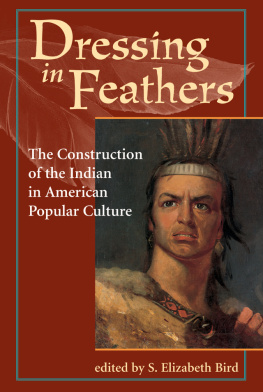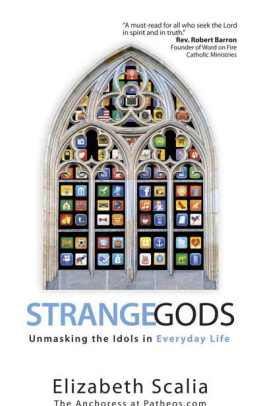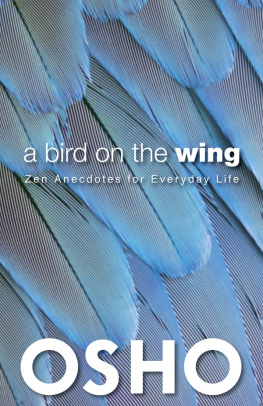The Audience in Everyday Life
The Audience in Everyday Life
Living in a Media World
S. Elizabeth Bird
Routledge
New York and London
Published in 2003 by
Routledge
29 West 35th Street
New York, NY 10001
www.routledge-ny.com
Published in Great Britain by
Routledge
11 New Fetter Lane
London EC4P 4EE
www.routledge.co.uk
Copyright 2003 by Taylor & Francis Books, Inc.
Routledge is an imprint of the Taylor & Francis Group.
Printed in the United States of America on acid-free paper.
All rights reserved. No part of this book be reprinted or reproduced or utilized in any form or by any electronic, mechanical, or other means, now known or hereafter invented, including photocopying and recording, or in any information storage or retrieval system, without permission in writing from the publishers.
10 9 8 7 6 5 4 3 2
Chapter 2 is an extensive revision of "What a Story! Understanding the Audience for Scandal," first published in Media Scandals: Private Desire in the Popular Culture Marketplace, edited by J. Lull and S. Hinerman (Cambridge, U.K.: Polity Press, 1997). Chapter 3 is an extensive revision of "Chatting on Cynthia's Porch: Building Community in an Internet Fan Culture," first published in Southern Communication Journal 65:1, 49-65, 1999. Chapter 4 is an extensive revision of '"Indians are like that': Negotiating identity in a Media World," first published in Black Marks: Minority Ethnic Audiences and Media, edited by K. Ross and P. Playdon (Aldershot, U.K.: Ashgate, 2001). Chapter 6 is an extensive revision of "CJ's revenge: Media, Folklore, and the World of AIDS," first published in Critical Studies in Mass Communication 13, 1-15, 1996.
Library of Congress Cataloging-in-Publication Data
Bird, S. Elizabeth.
Living in the media world / by S. Elizabeth Bird.
p. cm.
Includes bibliographical reference and index.
ISBN 0-415-94259-4 (hardback: alk. paper)ISBN 0-415-94258-6 (pbk:alk. paper)
1. Mass mediaSocial aspects. 2. Mass mediaAudiences.
3. Mass media and culture. I. Title. HM1206.B57 2003 302.23dc21
2003011583
ISBN 0-4159-4259-4(hb)
ISBN 0-4159-4258-6(pb)
For Graham, with love
Contents
This book brings together projects I have worked on for several years, both in Minnesota and Florida, and many people have contributed, both directly and indirectly.
I would like to acknowledge the support of the University of Minnesota Graduate School Grant-in-Aid program, which provided funding for the studies that led to chapters 2 and 4, as well as the College of Liberal Arts at the University of Minnesota, Duluth, which provided small funding opportunities that supported my ethnographic research.
My work has been greatly facilitated by hard-working graduate assistants, most notably David Woodward in Minnesota, and recently Noah Porter, who efficiently carried out essential bibliographic research as I worked on this manuscript at the University of South Florida.
I am especially appreciative of the sharp and open minds of the Anthropology and Communication graduate students in my USF seminars on Anthropology, Media, and Contemporary Culture, and Visual Anthropology. Their critical participation has helped tremendously as I have tried to apply an interdisciplinary cultural perspective to the thorny issues of media's role in our culture.
Many anonymous reviewers have commented on various versions of shorter papers that became some of the chapters in this book, and I believe the final manuscript owes a great debt to them all.
Many people have willingly participated in my research over the years, being interviewed, taking part in focus groups, and allowing me into their homes and lives. In particular, I thank the members of the DQMW-L list, who not only allowed me into their community, but actively helped shape my research through their insightful comments and suggestions.
I am lucky to have fine colleagues and friends in the Departments of Anthropology and Communication at USF, who have offered both professional insights and personal support, especially Jane Jorgenson, Linda Whiteford, Gil Rodman, Brent Weisman, Mark Neumann, Susan Greenbaum, Fred Steier, and Michael Angrosino. And I especially thank my colleague and friend Bob Dardenne, of USF-St. Petersburg. We began talking about media and culture almost twenty years ago, and we haven't stopped since.
Deep thanks go to my dearest friend, Eve Browning. Minnesota is far from Florida, and our daily walks are over. But through the wonder of e-mail, we can still talk, laugh and bitch at the world, and that helps keep me sane.
Finally I thank my families. My birth familymy father, who always believes in me, my mother who would have loved to see books with my name on them, and my siblings Michael, Alan, and Alison, who don't always know what I do, but are unfailingly encouraging. And above all I thank the family who has to live with my strange enthusiasms. My sons, Tom and Dan, fill me every day with love and pride, and are everything any mother could dream. Last but never least, the man whose love and support have been constant for so many years, from England to Iowa, to Minnesota, and now to the surreal world of Floridamy husband, Graham Tobin. Thank youn, with love.
1
Beyond the Audience
Living in a Media World
Introduction: Media as culture
Even as everyone appears to acknowledge Western culture's "media-saturated" reality, many of us deny it in our own lives. As a media scholar working within the discipline of anthropology, I get used to the comments: "I make up my own mind about politics; I don't need the media"; "I guess what you do is interesting, but of course I never watch TV myself." Many anthropology students resist the idea that studying media is relevant to an understanding of contemporary culture. Interesting, perhaps an elective that offers diversion from the serious pursuit of their discipline-but hardly significant. Yes, media messages do insidious things to people, but not of course to me.
I think the common sense view I encounter so frequently in my discipline is symptomatic of the way many Americans think of the media. They are aware that images are everywhere, and they sometimes feel beleaguered by the onslaught of messages. They worry about the "effect" of media on children, and they seethe about "biased" reporting or negative stereotypes. Yet they still resist full acknowledgement that today the media are not extrinsic to Western culture, but fully internalized-that "the obvious but hard-to-grasp truth is that living with the media is today one of the main things Americans and many other human beings do" (, 5).
Each time I teach a graduate seminar on the media in contemporary culture, I begin with the time-honored "media deprivation exercise" (a week, and to write a journal about their experiences. At the outset, most are blase; they hold images of themselves as serious, committed individuals, living lives free of external influences. Some proudly point out that they do not own a television. A week later they return, some almost shamefaced, as their journals and class discussion take them in directions they had never expected. A mother talks about how she is accustomed to watching a particular TV program with her teenage daughter, and then talking about and "around" it in a comfortable moment of connection. This week she had missed that terribly, and her daughter was irritable and upset by the break in routine. The issue was not the message of the show itself, but the relational context they had built around it. Another describes vividly his genuine fear when he had to turn off the radio for his daily 45-minute commute. "Suddenly there were all these sights and sounds that seemed to overwhelm me, and I felt disoriented. Later I actually heard a birdcall!" Social lives are put on hold, because they included movies or music. A political junkie feels withdrawal from news, and realizes she cannot enjoy her continuous processing of current events without media input. Another acknowledges her dependence on regular visits to an Internet chat forum. No one lasts more than four days; it is just too difficult. "It felt like withdrawing from the world," writes one ruefully. At this point, we are ready to start looking seriously at the media as culture.










